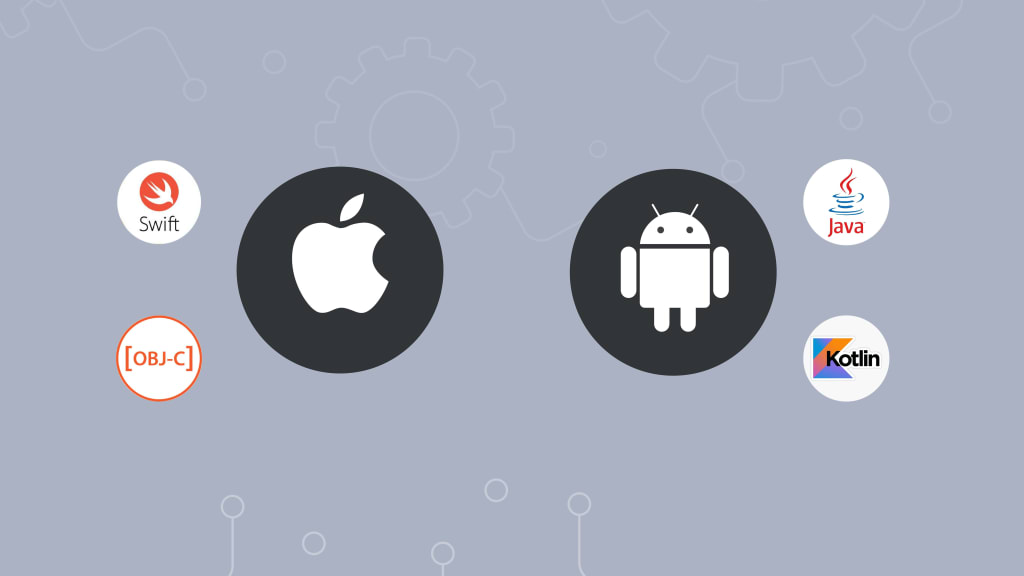How to Create Virtual Assistant App: Technological guide 2023
Choosing the right technology stack for your app with our comprehensive guide. Make informed decisions for success!

In today's rapidly evolving tech landscape, selecting the right technology stack for your app is a critical decision that can significantly impact your project's success. Whether you're an experienced developer or a business owner embarking on your first app development journey, the technology stack you choose will determine your app's functionality, flexibility, and overall user experience. This concise guide is here to help you navigate the complex process of making this crucial decision, so you can build your app on a solid foundation.
To make an informed choice, it's essential to have a clear understanding of your project's requirements, recognize the role of the technology stack, and define specific project goals.
Understanding Your Project's Requirements
Start by gaining a deep understanding of your project's specific requirements. This includes identifying your target audience, the essential features your app must have, and any scalability and security needs. This initial step serves as the foundation for making informed decisions about your technology stack.
The Role of Technology Stack in Project Success
The technology stack, consisting of programming languages, frameworks, libraries, and tools, plays a crucial role in your project's success. It directly impacts factors like functionality, performance, scalability, and user experience. The choice of technology stack can lead to complications, delays, and increased development costs. To ensure project success, select a stack that aligns with your long-term goals and addresses the needs of your project.
Defining Project Goals
Project goals are the guiding stars of your development process. Clearly defining your goals is essential for making informed decisions about your technology stack. Whether you aim for rapid market penetration, long-term sustainability, or innovation in a specific niche, your goals should reflect your app's purpose. They also influence budgeting and resource allocation, ensuring that your chosen stack can meet the requirements set by your goals.
Types of Technology Stacks
The technology stack you choose can significantly affect your app's performance, flexibility, and development process. To make an informed choice, it's crucial to understand the main categories of technology stacks: Mobile, Front-end, Back-end, and Database, and the components that make up each.
1. Mobile Technology Stack
When creating a mobile application, you have two primary platforms to consider: Android and iOS. Each platform requires a different technology stack:
- Android: Programming Language (Java, Kotlin), IDE (Android Studio), SDKs and Libraries (Android SDK, Various Libraries), Cross-platform Options (React Native, Flutter).
- iOS: Programming Language (Swift, Objective-C), IDE (Xcode), SDKs and Libraries (iOS SDK, Various Libraries), Cross-platform Options (React Native, Xamarin).
2. Front-end Technology Stack
The front-end of your app is what users see and interact with. A robust front-end stack ensures a consistent user experience. Key components include HTML (for structuring content), CSS (for styling and design), JavaScript (for interactivity and dynamic behavior), and frameworks like React, Angular, and Vue.js.
3. Back-end Technology Stack
The back-end of your app handles data processing, user accounts, and requests. Common components include programming languages (Python, Ruby, Java, Node.js, PHP), web servers (Apache, Nginx), databases (SQL, NoSQL, Graph), and frameworks (Ruby on Rails, Django, Express.js, Laravel).
4. Database Technology Stack
Databases are the backbone of your app, efficiently storing and managing data. The type of database you choose depends on your data model and scalability requirements:
- Relational Databases (e.g., MySQL, PostgreSQL, SQL Server): Structured data with predefined schemas.
- NoSQL Databases (e.g., MongoDB, Cassandra, Redis): Unstructured or semi-structured data.
- Graph Databases (e.g., Neo4j): Complex data relationships.
Factors to Consider
Your choice will significantly impact your app's success, scalability, performance, and security. Here are some essential factors to consider when making this crucial decision:
- Project Requirements: Understand your app's unique requirements, purpose, and platform considerations.
- Scalability: Plan for future growth and select technologies that support easy scalability.
- Performance: Evaluate your app's performance needs and choose technologies that optimize speed and responsiveness.
- Security: Prioritize security measures, especially for apps handling sensitive data.
- Development Team Expertise: Consider your development team's skills and align your stack with their capabilities.
- Project Budget: Balance your technological goals with budget constraints.
Community and Support: Choose widely adopted technologies with active communities for valuable resources and solutions.
Popular Technology Stacks
In this section, we'll provide an overview of commonly used technology stacks and discuss the pros and cons of three well-known ones:
MEAN Stack:
- Overview: MongoDB, Express.js, Angular, and Node.js. Known for flexibility and speed.
- Pros: Enables fast development, real-time applications, and scalability.
- Cons: Complexity may be a challenge for beginners, and Angular can be resource-intensive.
MERN Stack:
- Overview: MongoDB, Express.js, React, and Node.js. Emphasizes JavaScript and React for dynamic user interfaces.
- Pros: Combines JavaScript with React's component-based architecture for interactive applications.
- Cons: May have a steeper learning curve for React developers.
LAMP Stack:
- Overview: Linux, Apache, MySQL, and PHP (or Python/Perl). A long-standing choice for web development.
- Pros: Well-documented and suitable for beginners.
- Cons: Considered aging compared to MEAN and MERN, not ideal for real-time or data-intensive applications.
Real-World Examples
Let's explore some real-world case studies to highlight the importance of choosing the right technology stack:
Instagram: Initially used Django, Objective-C, and Java but transitioned to Python for the backend and React Native for cross-platform development, streamlining development and ensuring high app performance.
Netflix: Utilizes JavaScript for web applications and native development languages for mobile apps, ensuring consistent streaming and platform-specific features.
Airbnb: Uses Ruby on Rails for the backend and React Native for mobile apps, maintaining a single codebase for iOS and Android.
Conclusion
In the fast-paced world of technology, selecting the right technology stack for your app is a critical decision. Your choice should align with your project's specific requirements, and it plays a central role in determining your app's success. By understanding the key factors, exploring popular technology stacks, and following best practices, you can make an informed decision that sets your app up for long-term success. Choose your technology stack wisely, and seek professional guidance if needed to ensure your app's architecture is solid and adaptable in the ever-changing landscape of technology. Learn more how to choose the right technology stack for your app.






Comments
There are no comments for this story
Be the first to respond and start the conversation.